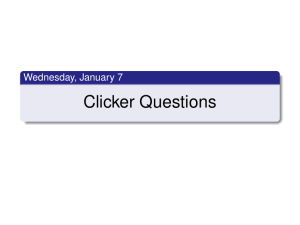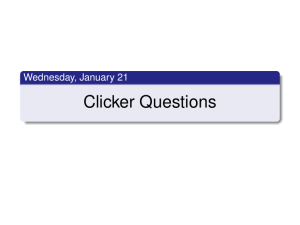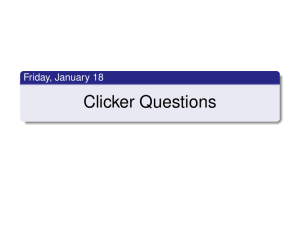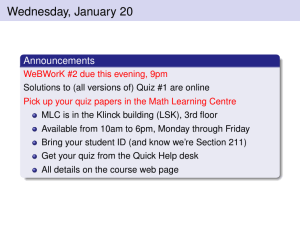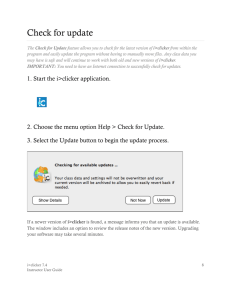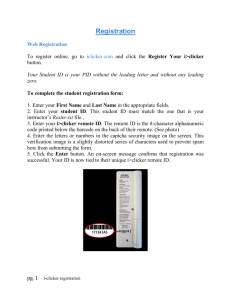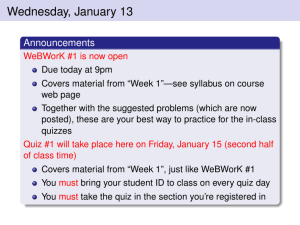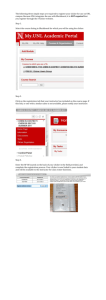5.111 Principles of Chemical Science MIT OpenCourseWare Fall 2008 rms of Use, visit:
advertisement
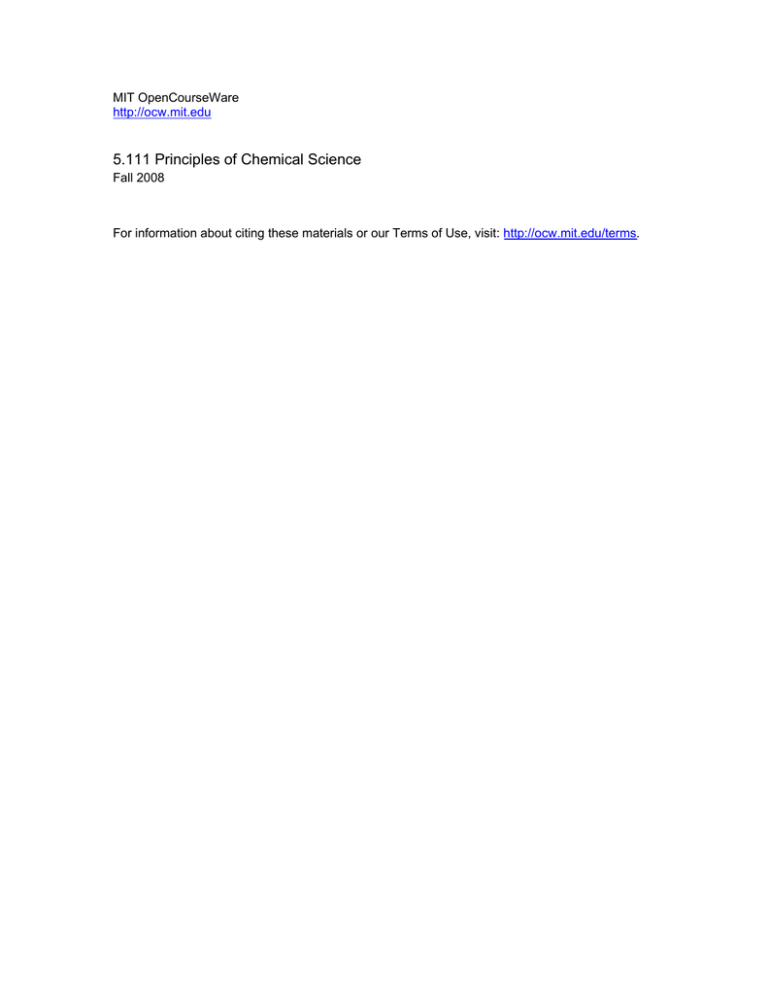
MIT OpenCourseWare http://ocw.mit.edu 5.111 Principles of Chemical Science Fall 2008 For information about citing these materials or our Terms of Use, visit: http://ocw.mit.edu/terms. 5.111 Lecture Summary #1 Review of Fundamentals: This material will not be explicitly covered in class. The intent of assigning this reading is to provide a brief review of relevant high-school-level material. Review by next Friday: Sections A.1 (pgs F1-F10), B.3-B.4 (F18-F21), C (F23 F28), D (F30-F36), E (F38-F44), F(F46-F50), G(F52-F59), H (F61-F64), L (F85-91), and M (F93-F100). Read for Lecture #2: Sections A.2-A.3 (pgs F10-F13) – Force and Energy, Sections B.1 B.2 (pgs F15-F18) – Elements and Atoms , Section 1.1 (pgs 1-3) – The Nuclear Atom. Assignment: Problem set #1 due on Session #5. Topics: I. Introduction to chemical principles II. Course policies (see general information handout) III. Introduction to the 5.111 teaching team 5.111 PRINCIPLES OF CHEMICAL SCIENCE Fall 2008 This subject deals primarily with the fundamental principles and concepts of chemistry. There are three lectures and two recitations each week. In addition to homework assignments, three hour-long examinations and a regularly scheduled final examination are given. TEXT: Chemical Principles: The Quest for Insight 4th Edition; Peter Atkins and Loretta Jones. W.H. Freeman & Co. 2008 (ISBN 0-7167-7355-4) Student Study Guide and Solutions Manual to Chemical Principles, 4th Ed. INSTRUCTORS: Professor Catherine L. Drennan Dr. Elizabeth M. V. Taylor RECITATIONS: Each recitation section meets twice per week. Recitations will include problem solving, review of concepts and opportunities to ask questions about the material. LECTURE NOTES: Lecture notes (with blanks) provided for each lecture. All of the blanks will be filled in during lecture GRADING: Three one-hour exams (3 x 100 points) One three-hour final exam Problem sets Attendance and in-class “quizzes” TOTAL 300 points 300 points 100 points 50 points 750 points HOMEWORK is due on the days specified on the calendar. Late problem sets are not accepted. Adjustments for missed homework resulting from excused absences will be made in the final grade. Inform your TA if you are ill or experience other catastrophes. 1 HOUR EXAMS and the final exam are closed-book and closed-notes. Most required equations and a periodic table will be provided. You will need to bring a pencil, an eraser, and a basic scientific calculator. Make-up exams will not be given. CLASSROOM CLICKERS will be used to facilitate interaction and to take attendance and administer in class “quizzes”. Each student will be assigned a clicker during the first recitation section. If you already have a physics clicker, you may register that clicker with chemistry as well. It is your responsibility to register your clicker number with your TA, bring your clicker to every lecture. Using someone else’s clicker is an actionable offence. Additional information is provided on the attached clicker policy sheet. SIGNIFICANT FIGURES. Rules for scientific notation and significant figures are available in the back of our textbook in Appendix 1, pages A5-A6. You are also responsible for knowing the following SI prefixes: n (nano, 10-9), µ (micro, 10-6), m (milli, 10-3), c (centi, 10-2), and k (kilo, 103). LAPTOPS. Laptops should not be open or in use during class. You will be given lecture handouts each day, so there is no need to type lecture notes. 2 5.111 Classroom Clicker Policies for Fall 2008 We will use classroom response devices in 5.111 during lectures to take attendance, enable feedback, and facilitate occasional in-class quizzes. We have outlined the following points to help clarify the class policies regarding clicker use. Why are we using clickers? 1) Clickers give us additional feedback on whether the class as a whole understands a given concept or when our explanations need to be expanded or clarified. This enables us to gauge the understanding of the entire class and adjust our lessons accordingly. 2) Clickers also provide you as a student feedback on how well you understand the material and how fast you are able to solve problems. For example, if you are able to solve the homework problems but run out of time on in-class clicker questions, it is a good indication that you will be pinched for time on the exam and may need to work through more practice problems to increase you speed. 3) We feel it is appropriate to reward the many students that consistently come to class and participate. In addition, because we take attendance we feel more comfortable posting lecture notes online. Answering in-class clicker questions: • For in-class responses, the clicker receiver will record your final answer during open polling. This means you can click as many answers as you like during an open slide, but only the last click will be recorded as your answer. • Apart from announced in-class quiz questions, you will NOT be graded on whether you answer clicker questions correctly. • For routine clicker questions, you are encouraged to attempt the question on you own, but you are certainly allowed to quietly discuss the problem with your neighbor. For announced quiz questions, any talking or sharing answers is considered cheating. • It is an actionable offence to use another classmate’s clicker during class or to have a classmate answer an attendance or quiz question using your clicker. Attendance details: • Class attendance will be recorded each day using the clickers. It is your responsibility to bring your clicker with you as part of being prepared for class. • If you have an excused absence from class, such as an illness or family emergency, you should contact your TA within one day of your absence. Excused absences that are reported within this time frame will not damage your attendance or quiz grade. • If you forget to bring your clicker to class, you should check in with your TA before or after lecture to record your attendance. 3
